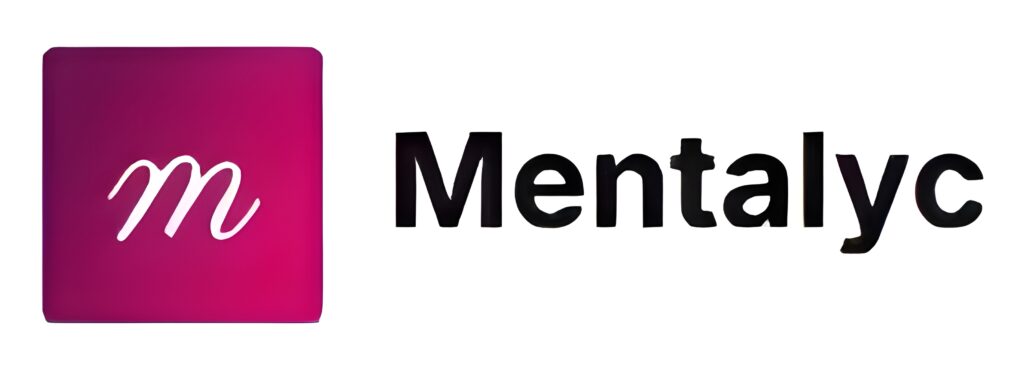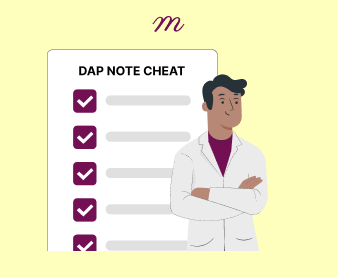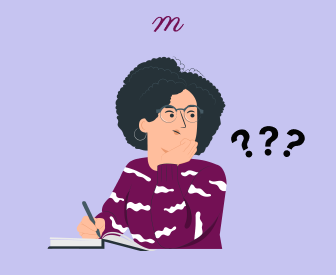Have your progress notes written for you automatically
If you’re a psychotherapist, you must document your psychotherapy sessions. One piece of the pie when you’re writing notes is being able to enter the interventions you have used in therapy. Sometimes, in talk therapy, it may feel like you aren’t doing much and the client is progressing. Knowing how to document your therapeutic interventions properly may change your view of what you, the interventionist or therapist, are doing in therapy.
Providing an intervention is an essential stage of therapy. The client won’t continue attending therapy and will remain untreated if you don’t offer an intervention. You will likely use different interventions in varying phases of treatment. For example, in the beginning phases of therapy, you’re gathering a lot of background information and formulating treatment goals and objectives. You may also spend a lot of time developing rapport with your clients.
After establishing goals and rapport, you use your theoretical orientation and knowledge of the client’s goals and objectives to use more targeted interventions specific to your client.
Why is documenting interventions necessary?
Documenting your interventions in a progress note is necessary because it shows your payor sources and any third parties who view your notes what you’re doing to help the client progress. Without your interventions, the client would stay stagnant, hence why they are in therapy.
When they audit or review your notes, insurance companies want to see that you are using appropriate interventions to get the client where they want to go. In addition, they want to know that the client is in therapy for a medically necessary reason and what you can do to help someone or your client achieve their goals.
So, if you are worried about fulfilling the insurance requirements in your notes, then it is highly recommended that you use Mentalyc to create insurance-friendly therapy notes and put all your worries aside.
What are interventions?
You provide interventions to help the client reach their targets and objectives in therapy. Many times, your interventions are influenced by your therapeutic modality. For example, suppose you are a DBT therapist. In that case, your interventions may be focused on mindfulness and distress tolerance skills, compared to a CBT therapist who might focus more on patterns of irrational thinking and cognitive distortions.
Your interventions should demonstrate that you’re practicing within your scope of practice and that you can help your clients reach their goals.
There are different types of interventions and intervention words you can use. When it’s hard to conceptualize your interventions, having a list of intervention words for your documentation can make it easier.
Types of interventions and intervention words
Interventions look different depending on whether you have an intake appointment, individual therapy, group therapy, or couples therapy.
In all types of therapy including cognitive behavioral therapy, you will provide some intervention, and those interventions need to clarify how the client is reaching their goals.
Intervention words for assessments
When you’re in the therapy assessment phase, you may be gathering a large amount of information quickly. Therefore, your interventions may look different than those with an established therapy client.
For example:
- Assessed…
- Gathered information on…
- Collected information on…
- Analyzed…
- Completed an assessment…
- Conducted an assessment…
- Reviewed…
Some examples of this in practice may look like this:
- The therapist assessed the patient for a history of previous traumatic experiences.
- The therapist gathered background information on their family’s mental health history.
- The therapist conducted a PHQ-9 assessment in the session.
- The therapist reviewed their GAD-7 scores with them in the first session.
Therapy intervention words
When you are engaged in a therapy session with the client, you often actively guide the client to achieving their goals.
There are many actions you may take as a mental health professional in therapy, such as:
- Addressed concerns…
- Assigned homework…
- Challenged thoughts…
- Deescalated…
- Elicited…
- Educated…
- Encouraged…
- Explored…
- Evaluated…
- Focused on…
- Followed-up on…
- Gathered…
- Identified…
- Modeled…
- Monitored…
- Observed…
- Processed…
- Problem-solved…
- Recommended…
- Reflected…
- Reframed…
- Reinforced…
- Supported…
- Validated…
- Verbalized…
While this isn’t a complete list of interventions that can be used in therapy, many of these interventions are used frequently in treatment. You may choose from the list or use your own. Remember that any action you take with the client is considered an intervention.
Let’s look at some potential intervention sections in progress notes for common themes in therapy.
Example of an intervention section for a client with anxiety
The therapist explored with the client times when their anxiety was high and processed what anxiety feels like in their body. The therapist validated the client’s concerns regarding anxiety. The therapist modeled breathing techniques and progressive muscle relaxation for the client in the session. The therapist also assigned the client homework to try deep breathing exercises or progressive muscle relaxation before the next session. The therapist will monitor the client’s progress with their anxiety by administering the GAD-7 assessment every month.
Example of an intervention section for a client with bipolar disorder
The therapist explored with the client what triggers their manic and depressive episodes. The therapist helped the client identify what a manic episode looks like. The therapist assisted the client with pinpointing the environmental stressors that lead to manic episodes. The client asked about a referral for medication management, as the client believes this can help them manage their manic and depressive episodes more effectively. The therapist referred the client to two local psychiatrists to potentially start a mood stabilizer.
Example of an intervention section for a client with depression
The therapist assisted the client with identifying how their symptoms of depression impact their ability to complete their schoolwork. The client reports that they have difficulty attending class, completing their work, and often have difficulty getting out of bed. The therapist first gathered background information about potential stressors when their depression started. High levels of family conflict and financial strain appear to impact the client. The therapist educated the client on ways to set healthy boundaries with their family and provided the client with additional reading resources that could be helpful in effectively managing conflict. The therapist will follow up on their attitudes surrounding money in the next session. The therapist assessed the client for suicidal ideation, plan, or intent, and the client denied all areas of risk. The therapist also evaluated the client for any thoughts of self-harm, which the client denies.
Example of an intervention section for a client with ADHD
The therapist explored with the client the potential stressors that occur with ADHD. The client was able to identify symptoms of ADHD that they are having. Next, the therapist explored with the client what strategies they have used before and what methods haven’t worked for them. Finally, the client asked for a potential referral for medication management. The therapist referred the client to a local psychologist for ADHD testing and the names of Psychiatrists for potential medication management.
Example of an intervention section for a couple’s therapy session
The therapist explored the goals of each person in the couple, and the couple was able to identify that they want to work on communication skills and healthy conflict resolution. The therapist encouraged both partners to identify times when they communicate well and times when they feel they aren’t communicating well. Finally, the therapist addressed the goals for therapy with the couple. The therapist will educate the couple on the Gottman method in future sessions, teaching them skills such as the four horsemen of the apocalypse and their antidotes. The therapist will also educate the couple on Gottman skills, such as soft start-ups, creating a culture of gratitude, and the difference between solvable vs. perpetual relationship problems.
Example of an intervention section for a group therapy session
The therapist conducted a group therapy session on self-esteem. First, the therapist educated the group on self-esteem and factors that can help and harm self-esteem. Next, the therapist encouraged the group to discuss what messages they received from their parents, caregivers, friends, and the media regarding their bodies and to examine if any of those messages have impacted their self-esteem. The group was receptive to this activity. The therapist then discussed the long-term impacts of low self-esteem on mental or behavioral health. Finally, the therapist taught the group to practice positive affirmations to increase self-esteem.
Technology is reducing the need for manual documentation and ensuring accurate interventions. With platforms like Mentalyc automating note-taking, it’s a lot easier to focus on providing quality care, not administrative tasks.
Interventions Recap
Writing interventions doesn’t have to be a complex process, but documenting interventions is necessary for payor sources to see how you’re helping your client reach their goals. Sometimes, interventions may be more complicated than the interventions listed above.
For example, sometimes your intervention might involve helping a client with involuntary hospitalization, and your intervention is assessing for safety risks and making a plan to keep your client safe.
Other times your intervention section may look different due to your theoretical orientation. For example, EMDR therapists may utilize different interventions than an IFS therapist.
You may also consider whether or not your interventions are evidence-based. This may not always be necessary, but you also want to think about methods and interventions that have been helpful and have research to back up your techniques.
One specific intervention may work well for a client with a presenting issue; for another, it may be a challenge or unhelpful. Documenting what works and doesn’t can help you track client progress and choose appropriate and helpful interventions in the future.
Disclaimer
All examples of mental health documentation are fictional and for informational purposes only.










